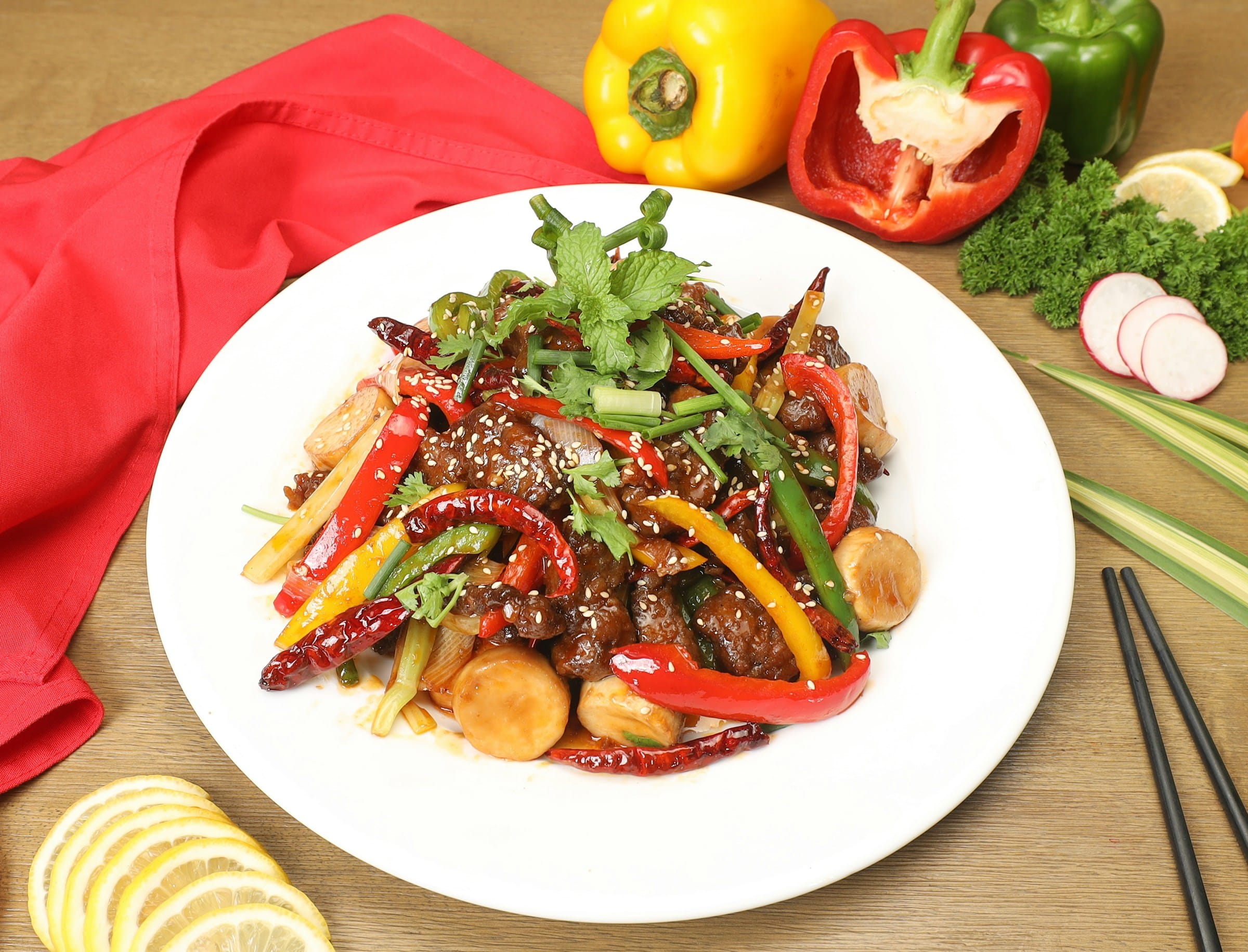What’s the Secret to a Sumptuous Beef Bourguignon with a Deep Red Wine Reduction?

Are you a home chef yearning to master the art of quintessential French cuisine? Does the thought of a rich, hearty beef stew, slow-cooked to perfection and steeped in a robust red wine reduction, set your taste buds on a tantalizing journey? If your answer is a resounding "Yes," then you’re in the right place. Today, we’re going to unravel the secrets behind creating a sumptuous Beef Bourguignon, a traditional French dish that’s a symphony of flavors when executed with the right technique.
The Importance of Quality Beef in Bourguignon
At the very heart of the Beef Bourguignon is, as its name suggests, beef. Selecting the right cut of meat is crucial to achieving the desired texture and flavor.
Avez-vous vu cela : How to Bake a Gourmet Peach Galette with a Buttery, Flaky Pastry?
When choosing your beef, lean towards the chuck. This cut of meat, found in the shoulder region, is brimming with connective tissue, collagen, and a moderate amount of fat. All these elements contribute to a more tender and juicy result after a long, slow cooking process. The fat marbling melts into the stew, adding a depth of flavor that leaner cuts simply cannot provide.
Another point to consider is the quality of your beef. Opt for grass-fed, organic beef, if feasible. Such meat not only boasts superior taste and texture but also offers a more ethical and healthy choice.
Avez-vous vu cela : How to Perfect the Delicate Art of Sourdough Bread with a Crunchy Crust?
The Role of Bacon and Its Fat
In a true French Beef Bourguignon, bacon is not an optional extra. It is an integral ingredient that lends a smoky flavor, creating a beautiful contrast with the rich, wine-infused sauce.
Start by cutting the bacon into small pieces. Render the bacon in your pot, allowing the fat to melt and coat the bottom of the pot. This bacon fat becomes the base for browning your beef, providing an additional layer of flavor. Remember to leave the bacon in the pot as you add the beef. The small pieces of bacon will become crunchy, providing a delightful textural contrast in the final dish.
The Magic of a Red Wine Reduction
The wine reduction is the soul of the Beef Bourguignon. The wine you choose can make or break your dish. A good rule of thumb is to select a wine that you would enjoy drinking. A full-bodied red wine, such as a Burgundy or a Pinot Noir, works incredibly well in this recipe.
To create your wine reduction, add the wine to your pot after you’ve browned the meat and cooked your vegetables. Allow the wine to simmer and reduce by half. This process intensifies the wine’s flavor while cooking off the alcohol. As the wine reduces, it melds with the meat juices, and other flavors creating a rich, robust, and velvety sauce that is characteristic of a well-made Beef Bourguignon.
The Slow Cooking Process
Patience is a virtue, especially when it comes to cooking a Beef Bourguignon. This dish is not a quick weeknight dinner option; it is a labor of love that requires a slow cooking process to bring out the flavors.
Start by browning your beef in the bacon fat. This creates a Maillard reaction, where the surface of the meat caramelizes, resulting in a complex flavor profile. Once your beef is browned, and your wine reduction is bubbling away, lower your heat, cover your pot, and let the magic happen.
Slowly simmering the stew allows the flavors to marry, the beef to tenderize, and the sauce to thicken. A slow-cooked Beef Bourguignon is a testament to the power of time and patience in cooking.
The Final Touches
The last steps in preparing your Beef Bourguignon involve adding a few final ingredients to the pot. Traditional recipes call for the addition of small, caramelized pearl onions and sautéed mushrooms during the last half-hour of cooking.
These vegetables add a touch of sweetness and earthiness to the stew, complementing the richness of the beef and the wine sauce. Additionally, they provide a contrasting texture, making every bite of your Beef Bourguignon a delightful exploration of flavors and textures.
In the realm of French cuisine, the Beef Bourguignon stands as a dish that embodies simplicity, elegance, and a celebration of flavors. Its rich, deep sauce, tender beef, and the medley of flavors that come from each ingredient all contribute to creating a dish that is truly more than the sum of its parts. With this guide, you’re well-equipped to recreate this French classic in your own kitchen.
The Beauty of Herbs and Spices in Beef Bourguignon
The choice of herbs and spices in your Beef Bourguignon can make the symphony of flavors sound even more melodious. Hence, it’s important to choose wisely and use them strategically. A few sprigs of fresh thyme, a couple of bay leaves, and a bit of fresh parsley are all you need to elevate the flavor profile of this classic French dish.
Thyme, with its earthy, slightly sweet flavor, enhances the savory notes of the beef and bacon. Bay leaves add a subtle bitterness that balances the richness of the beef and the sweetness of the wine sauce. Finally, the fresh parsley added at the end brightens up the dish and provides a vibrant contrast to the deep, robust flavors of the stew.
If you want to take your Bourguignon to the next level, consider adding a spoonful of demi-glace. This rich, concentrated stock adds depth and complexity to the stew, making your Beef Bourguignon even more sumptuous.
Remember, when it comes to herbs and spices, less is more. Overwhelming the stew with too many flavors can overshadow the main stars of the dish – the beef and the wine. So, carefully balance your herbs and spices to enhance, not overpower, the robust flavors of this classic French dish.
Creating a Gluten-Free Bourguignon
For those following a gluten-free diet, the good news is that you can still enjoy this hearty, classic French dish by making a few simple adjustments to the Bourguignon recipe.
Firstly, instead of using regular flour to coat and brown the beef, opt for a gluten-free flour blend. This alternative version will still help to seal in the juices and create that desirable caramelized exterior.
Additionally, be aware of hidden gluten in your beef broth or stock, which is often used in traditional Beef Bourguignon recipes. Ensure you use a gluten-free label broth or make your own at home.
Finally, most red wines are naturally gluten-free, but some may contain traces of gluten due to the fining process, where certain agents are used to remove impurities. Look for wines that are labeled as gluten-free to be completely safe.
Conclusion: Savoring Your Beef Bourguignon
Your quest to master the art of Beef Bourguignon does not end with the completion of the cooking process. To truly appreciate this classic French dish, take the time to enjoy the fruits of your labor.
Serve your sumptuous Beef Bourguignon with a side of creamy mashed potatoes or a slice of crusty bread. These sides work wonderfully in soaking up the rich wine sauce, ensuring that none of that deliciousness goes to waste.
As you tuck into your homemade Beef Bourguignon, savor each bite. Feel the tender beef melt in your mouth, taste the robustness of the red wine reduction, and relish the contrasting textures of the bacon, pearl onions, and mushrooms.
Whether you are a seasoned home chef or a beginner, mastering the Beef Bourguignon is a journey. It’s about understanding and respecting each ingredient and the role it plays in creating the final dish. It’s about the joy of slow-cooking, the anticipation as the aroma of the stew fills your kitchen, and the satisfaction when your Beef Bourguignon turns out just perfect.
With this guide, you have learned not just a recipe, but the art of creating a classic French dish, with all its subtleties and nuances. So, the next time you’re in the mood for a hearty, gluten-free beef stew with a deep, red wine reduction, pull out your slow cooker, and let the magic of slow-cooked Beef Bourguignon unfold in your kitchen.
